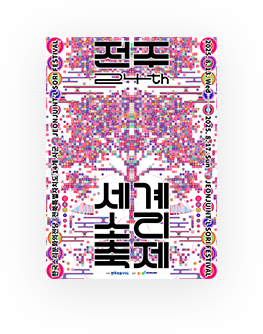d-day
D
-
26


2025. 8. 13. Wed - 2025. 8. 17. Sun

90 Minute
Pay
Suitable for ages 8 years and older
Lee Jiyeong Style Gayageum Sanjo
Lee Jiyeong's approach to sanjo differs from that of other folk music masters, as well as from that of Western music-based composers. In order to create her unique style of sanjo, she studied not only traditional pansori but also beompae (Buddhist music), Seodosori (folksongs from mid-western area of the peninsula), and gut (shamanic) music. From there, she discovered melodies suitable for her gayageum sanjo and incorporated them into her own piece through her techniques and skillfulness. Thereby, Lee Jiyeong sanjo achives its unique value.
Lee Jiyeong style gayageum sanjo begins with “holaebijul” that refers to the eighth string among the twelve strings of gayageum. In gayageum sanjo, there is no other string with the same pitch as this string. Among all existing sanjo pieces, Lee Jiyeong's gayageum sanjo is the only one that begins with this pitch.
This sanjo maintains the sanjo genre’s traditional grammar and aesthetics while achieving a uniqueness. Although her sanjo overall shows a kind of intellectual attitude, the changing melodies and rhythms reveal a colorful, emotional sentiment. Has such a dynamic sanjo ever existed before?
Lee Jiyeong studied preexisting rhythmic patterns and incorporated them into her sanjo and also developed them. This process incurred rhythmic changes. In the 1950s, the danmori was created in the realm of gayageum sanjo based on the rhythms of nongak (lit. farmers' music). Considering this history, it is believed that the new patterns shown in Lee Jiyeong's sanjo are the result of “unique naturalness,”especially shown in the sections of “Cheongbo 2” and “Bancheop-eotmori.”
Jeon Chusan Style Danso Sanjo
There had been a shared perception that the instrument of danso was unsuitable for playing sanjo’s unique melodies. Chusan Jeon Yongseon (1890–1965) overcame this perceived limitation of sanjo and thereby established the genre danso sanjo, which became passed to Lee Saenggang later.
Master Lee Yonggu, who is skilled both in daegum and danso sanjo, has established his unique system of nongeum (tone-control), which makes his nickname of “Bamboo God” appropriate. Through his danso, he produces a variety of tones that were previously considered impossible in sanjo, such as shaken, flowing, bended, and squeezed sounds.
This sanjo, primarily based on the gyeomyeon-jo mode, includes two kinds of gyeomyeon-jo modes coexisting – The C-key gyeomyeon-jo and G-key gyeomjeonjo alternate, conveying the unique charm of danso sanjo. The rhythmic arrangement of this sanjo consists of a slow jinyangjo, jungmori, jungjungmori, and jajinmori. The conclusion of the sanjo genre typically takes one of two ways: playing without/beyond rhythmic structure, or using the rhythm of jungmori. Master Lee Yonggu’s Jeonchusan-ryu danso sanjo concludes elegantly with the rhythm of “puneun (releasing) jungmori.”